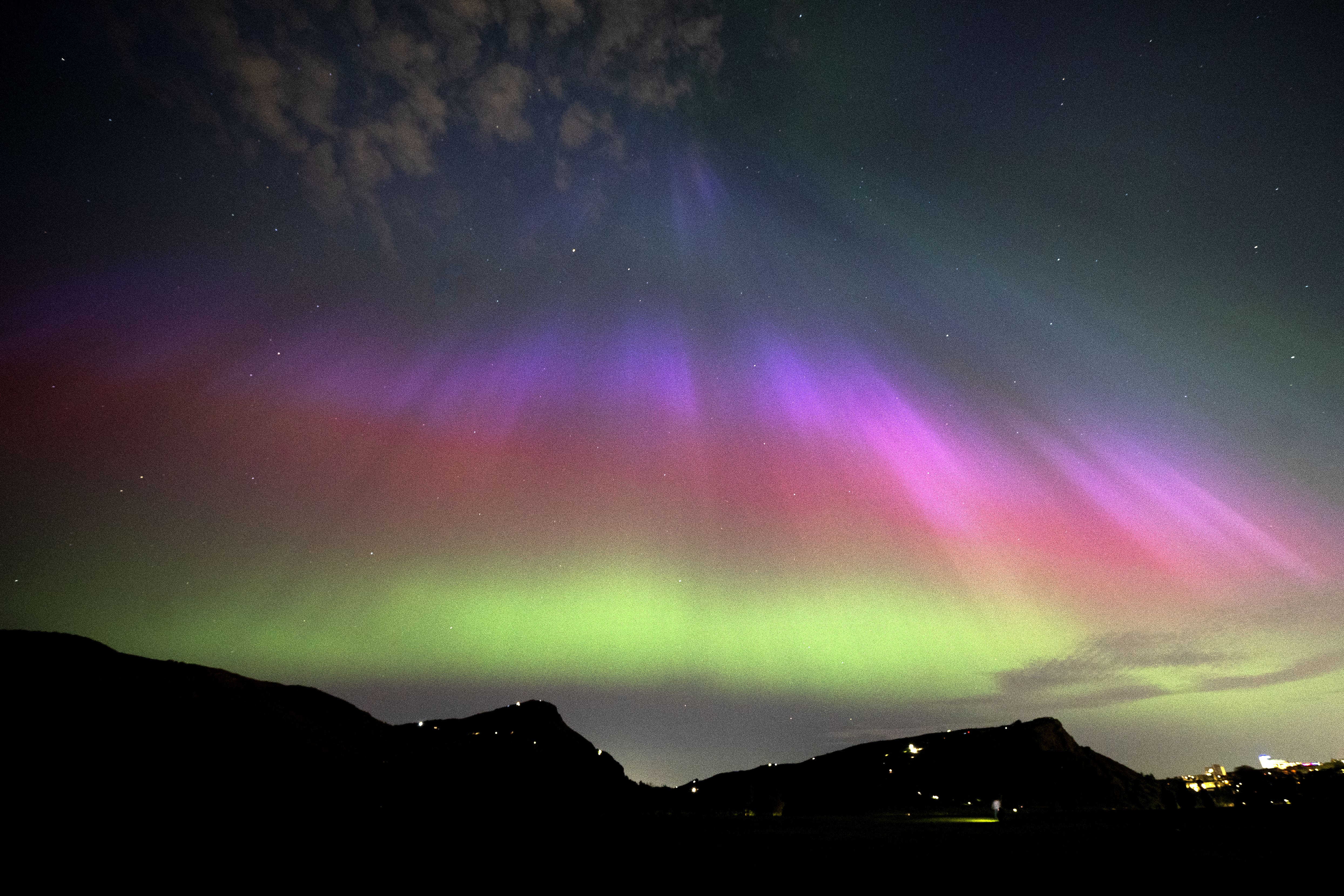Northern Lights sightings possible again for parts of the UK
Marco Petagna, a meteorologist at the Met Office, the lights might be visible for some areas of the country again on Sunday night.

The Northern Lights might be visible across parts of the UK again on Sunday night after the rare phenomenon was spotted over the weekend.
Also known as aurora borealis, the bands of pink and green light were seen across the UK and in parts of Europe after an “extreme” geomagnetic storm caused them to be more visible, according to the US National Oceanic and Atmospheric Administration (NOAA).
Marco Petagna, a meteorologist at the Met Office, said it was expecting “another injection of energy from the sun in the next few hours” which meant the lights might be visible for some areas of the country again on Sunday night.
He said: “There’s a higher chance of seeing it if you’re in the north of the UK again – in places like Scotland, Northern Ireland and areas in northern England.
“It’s also very dependent on the cloud cover. There have been thundery showers across the north today as well so that might hamper things slightly.
“The best chance you have of seeing the lights is if you are in an area in the north of the UK with a clear sky.”
Mr Petagna added that the aurora might be visible in southern parts of the UK, but it would likely only be seen through a good camera, rather than with the naked eye.
The G5 geomagnetic storm, which is considered extreme and the strongest level of solar storm, hit Earth on Thursday. The cause of this storm was a “large, complex” sunspot cluster, 17 times the diameter of the Earth, according to the NOAA.
The aurora borealis was most visible on Friday night, when Chris Snell, a meteorologist at the Met Office, said there were sightings “from top to tail across the country”.
The last storm with a G5 rating hit Earth more than 20 years ago in October 2003 and caused power outages in Sweden, Professor Carole Haswell told the BBC Radio 4 Today Programme on Saturday morning.
Prof Haswell, head of astronomy at the Open University, said: “A lot of the satellites communicate using radio signals and all of these charged particles speeding around disrupt radio signals, particularly GPS which is used by planes can be disrupted so it can cause navigation problems, it can cause outages with satellites, it can bring down power systems.
“The last big G5 storm caused a power outage in Sweden and I haven’t heard of anything happening this time yet, so hopefully people have designed in sort of redundancies into their systems so that they can actually weather this sort of space weather.”
Prof Haswell also explained how different colours within the aurora are formed and said: “Green comes from oxygen which is about 80 to 250 miles above the earth’s surface.
“The purple, blue and pink comes from nitrogen and when you get a very strong aurora sometimes you see a sort of scarlet red, and that comes from oxygen which is higher in the earth’s atmosphere, at an altitude of about 180 miles.”
Aurora displays occur when charged particles collide with gases in the Earth’s atmosphere around the magnetic poles.
In the northern hemisphere, most of this activity takes place within a band known as the aurora oval, covering latitudes between 60 and 75 degrees.
When activity is strong, this expands to cover a greater area – which explains why displays can be occasionally seen as far south as the UK.